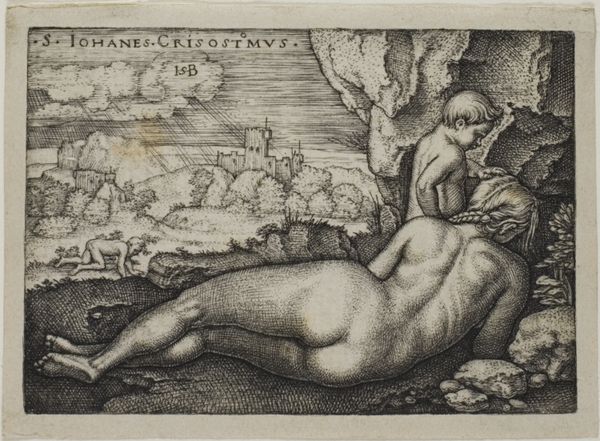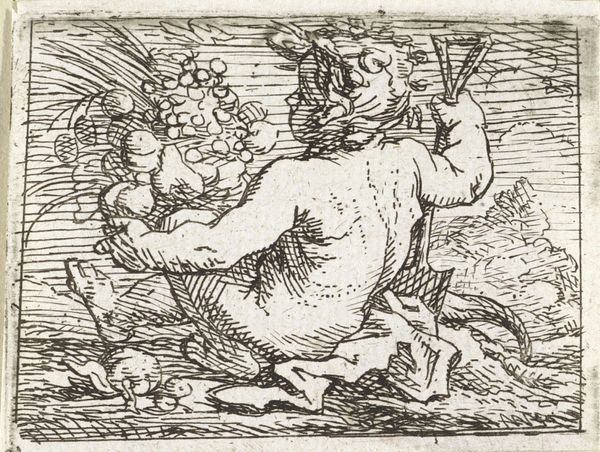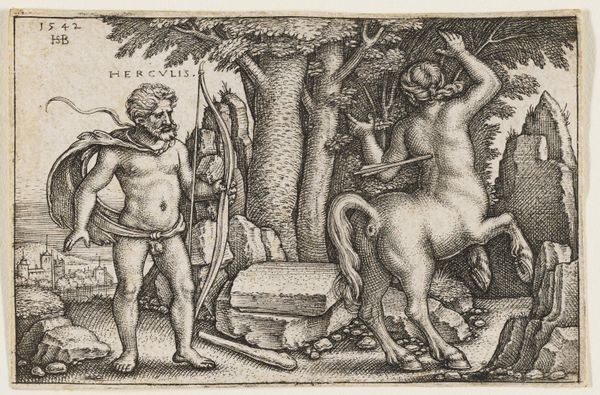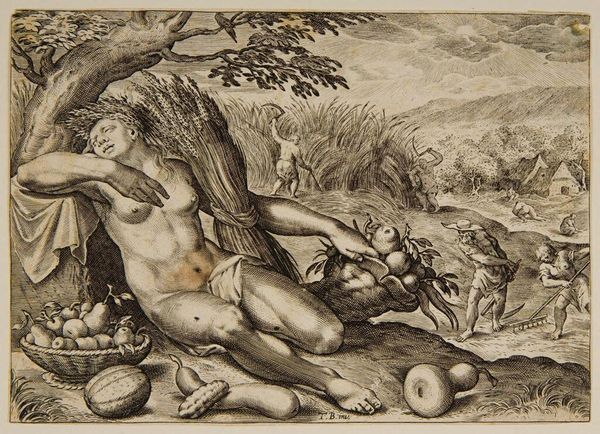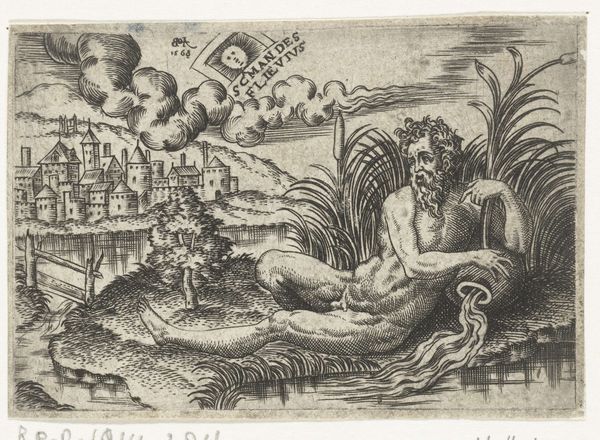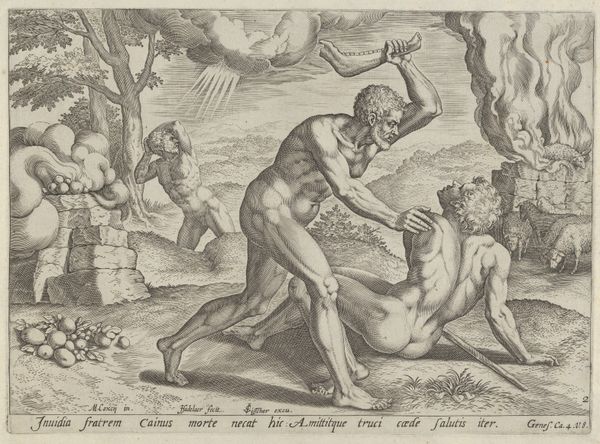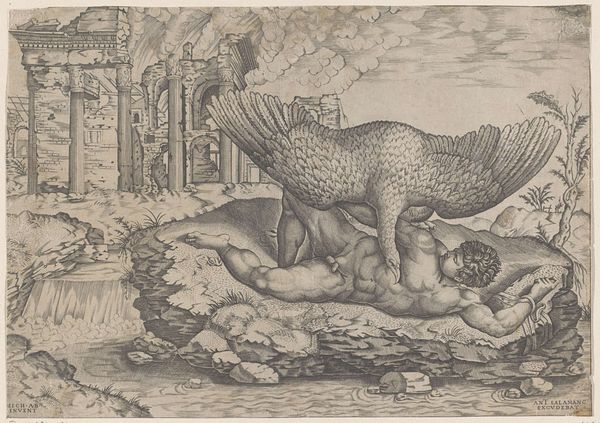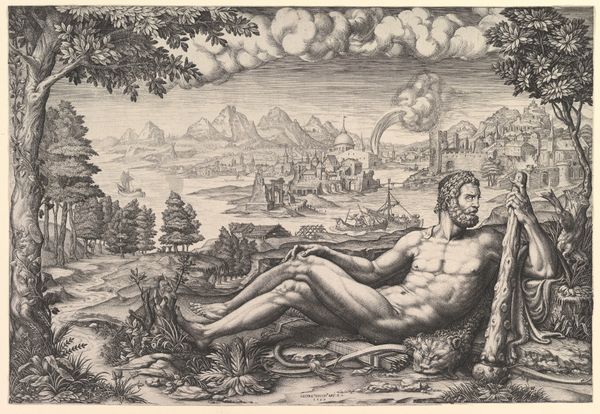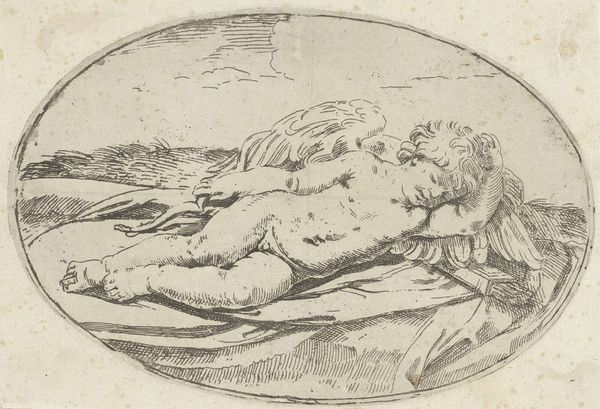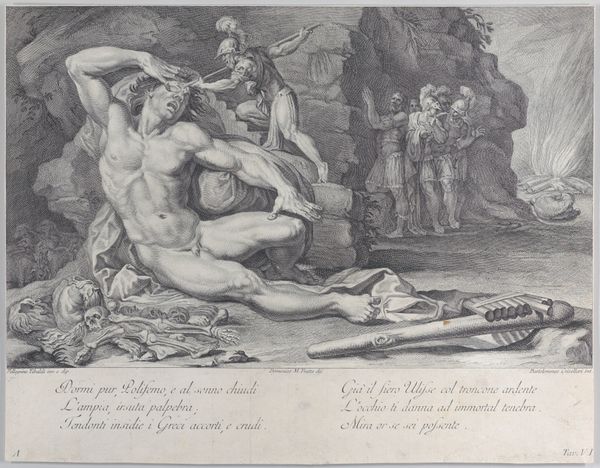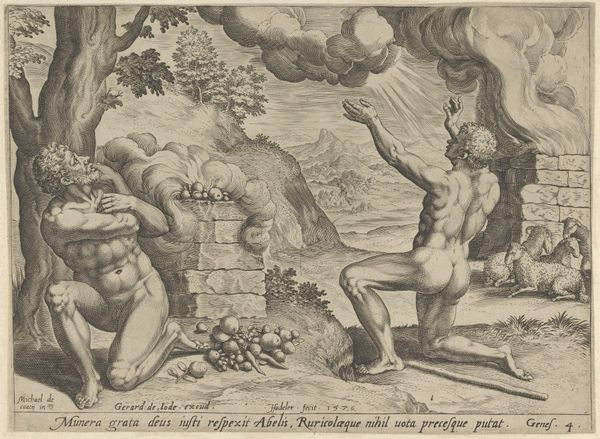
drawing, print, paper, engraving
#
drawing
#
germany
# print
#
landscape
#
figuration
#
paper
#
northern-renaissance
#
nude
#
engraving
Dimensions: 54 × 77.5 mm (image/plate); 55 × 78 mm (sheet)
Copyright: Public Domain
Curator: Look at this intriguing engraving, "Penance of St. John Chrysostomus," made by Sebald Beham. Editor: My first reaction is…uncomfortable. It’s a strange blend of piety and blatant nudity. The landscape behind her is idyllic, while this almost grotesque figure dominates the foreground. Curator: Exactly. It challenges expectations. Sebald Beham, working during the German Renaissance, was known for prints that questioned religious and social norms. What's depicted here isn’t quite scriptural. The legend, developed later, says that St. John Chrysostom was tempted and, as penance, crawled on his hands and knees, becoming so debased he was mistaken for an animal and suckled by a princess. Editor: So it's about public perception and humiliation. The print visualizes a loss of power, with the fallen cleric at the margins crawling while the fully exposed figure of the princess occupies the prime visual space. A radical statement on the church, perhaps? Curator: Possibly. Consider the context of the Reformation. The artwork predates modern sensibilities. Religious figures, though venerated, were always subjected to moral scrutiny through narratives of trials and triumphs, failures and redemptions. Editor: I’m drawn to the castle in the distance, this ideal of patriarchal authority. And the princess is located near a sort of cave entrance, a potentially maternal image juxtaposed to the symbol of secular authority. Curator: The technique itself speaks volumes, though. The sharp, precise lines of engraving render every detail, from the rough rocks to the princess's form. The lines emphasize a physicality, both beautiful and disturbing. It also helped standardize images, enabling broad circulation of challenging religious commentary during a volatile time. Editor: It does spark important discussions about power, vulnerability, and the body within the confines of religious stories, so even its controversial nature offers a unique space for exploring gendered and political elements. Curator: Ultimately, Beham gives us a potent image about the consequences of moral failing and the cost of redemption in a changing world, doesn't he? Editor: Indeed. It pushes us to ask, "Who are our saints, and how are their stories used to shape our own moral landscape?"
Comments
No comments
Be the first to comment and join the conversation on the ultimate creative platform.
